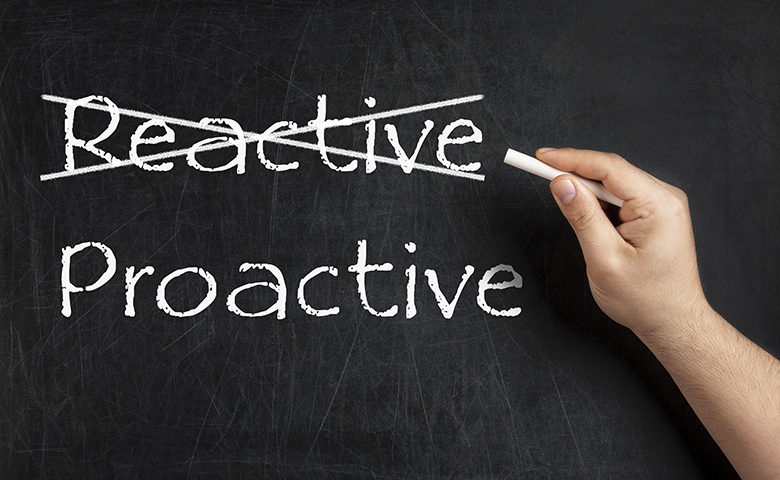There’s a lot of talk about reactive and proactive strategies (maybe not enough as it relates to maintenance and safety) but the implications of each strategy aren’t always clear.
Reactive strategies—responding to issues after they occur—are used by all companies. After all, when a piece of equipment breaks down, you have to fix it. But some companies wait for an incident to occur and then take corrective action to repair the machine and hope that it doesn’t happen again, rather than investing the money and time to prevent them from happening in the first place.
Recurring problems with equipment can also negatively impact culture if frustrated employees have voiced their concerns and management hasn’t fixed the known issues.
While it could be argued that you can’t anticipate all potential challenges or breakdowns, the fact remains that most of them can be prevented when the right training and systems are applied. In this case, a proactive system of preventive maintenance may be a more cost-effective and safer option than relying on sudden corrective action requirements.
There aren’t many downsides to preventive maintenance beyond time spent organizing and performing some routine tasks—that time is often offset by not having people stand around waiting for equipment to be repaired in an emergency. Preventive maintenance functions while the equipment is still in good working order. Because of that, sometimes the company does not want to put the money out upfront.
Often performed on a predetermined schedule, preventive maintenance will avoid unscheduled downtime and exorbitant repairs to get back up and running when an unexpected failure occurs. It also avoids the increased risks associated with rushing, frustration and fatigue that typically occur when a breakdown impedes work or makes work much harder for employees.
OSHA considers preventive maintenance a form of hazard control. Some regulations relating to preventive maintenance are industry-specific, but most companies fall under the requirement of tracking the preventive maintenance of assets to help prevent incidents due to equipment failure.
A preventive maintenance plan can be useful in multiple ways. Not only will it outline all of the scheduled maintenance and inspections, but it becomes a standard recording system that can easily be filed and kept as a record.
At a quick glance, you can see who is responsible for each task. For example, even though the HVAC system maintenance is performed by an outside contractor, someone within the company needs to arrange for them to come according to the schedule and get the paperwork to form a record when completed. Having a well-crafted schedule can help you stay on top of making sure all the paperwork and other tasks are completed in a timely manner.
This is especially helpful when there are extended employee absences or the company has a high rate of employee turnover. If everything runs on schedule and has people tasked to complete it, even the small tasks will no longer go overlooked and will allow people to know what needs to be done in the event that the person assigned to that task is not available.
Spending some time to implement a preventive maintenance plan can provide a good return on investment with benefits extending to safety, production, maintenance, quality, service and finance. And once you have mapped out what you need to do, you’ll find it’s not that hard either. If you’re looking to implement a preventive maintenance plan, start by listing all of the equipment that requires regular maintenance. Devise a breakdown of daily, weekly and monthly tasks and document who should be responsible for each one. It’s typically stuff you’re doing anyway, and you’re just putting it all on one list and ensuring you stay proactive instead of reactive.

